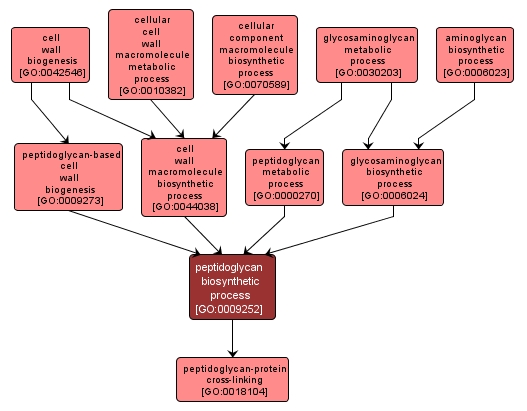GO TERM SUMMARY
|
| Name: |
peptidoglycan biosynthetic process |
| Acc: |
GO:0009252 |
| Aspect: |
Biological Process |
| Desc: |
The chemical reactions and pathways resulting in the formation of peptidoglycans, any of a class of glycoconjugates found in bacterial cell walls. |
Synonyms:
- murein biosynthetic process
- peptidoglycan formation
- peptidoglycan biosynthesis
- GO:0009285
- peptidoglycan anabolism
- murein biosynthesis
- peptidoglycan synthesis
|
|

|
INTERACTIVE GO GRAPH
|














